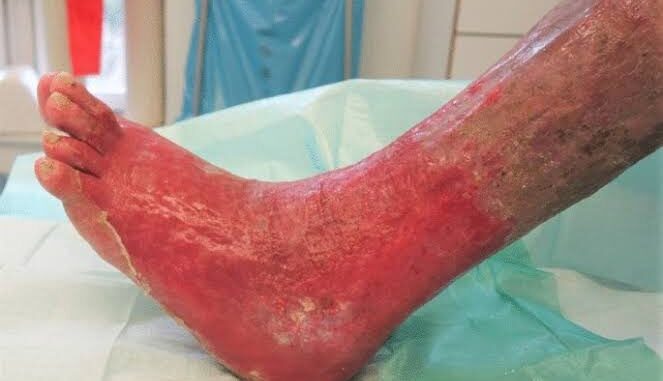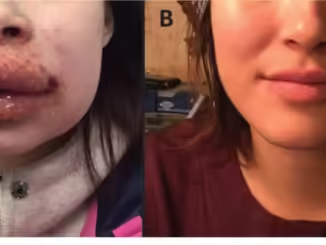
Tragic Consequences of Numbing Cream Reactions: Two Fatal Cases Spark Alarming Concerns
In recent months, reports of two fatal incidents have brought renewed scrutiny to the use of numbing creams in cosmetic and medical procedures. These tragic cases, both resulting from severe reactions to numbing creams, have raised concerns over the safety protocols in using such topical anesthetics, especially in non-medical environments. Numbing creams, typically applied before cosmetic procedures like laser treatments, tattoos, and waxing, can be effective in reducing pain, but improper usage or lack of awareness about potential side effects can lead to disastrous outcomes.
### The Rising Popularity of Numbing Creams
Numbing creams, also known as topical anesthetics, have become increasingly popular in the beauty and wellness industries. Many clients request these products to reduce discomfort associated with procedures, especially those involving needles or lasers. The active ingredients in numbing creams, such as lidocaine, benzocaine, and tetracaine, work by temporarily blocking nerve signals in the area where the cream is applied. This numbing effect allows clients to undergo cosmetic treatments with minimal pain.
However, while generally safe when used correctly and in appropriate doses, these creams can be hazardous if applied in excessive amounts or on large areas of the body. The dangers become even more pronounced when the products are misused or when clients have allergies or sensitivities to the active ingredients. In rare cases, these creams can enter the bloodstream, leading to serious side effects such as dizziness, shortness of breath, seizures, and even fatal consequences, as highlighted in these recent cases.
### The Fatal Reactions: What Went Wrong?
In the two cases under investigation, both clients reportedly suffered fatal reactions after the application of numbing creams. These incidents raise critical questions about the supervision, dosage, and environment in which the creams were administered.
1. **Case 1**: The first case involved a woman undergoing laser hair removal at a non-medical spa. The technician applied a large quantity of numbing cream across her legs before the procedure, but within minutes, she began feeling unwell. The woman reportedly experienced symptoms like nausea, dizziness, and a rapid heartbeat shortly after the application. Despite efforts to revive her, she went into cardiac arrest and tragically passed away. An autopsy revealed an excessive concentration of the anesthetic in her bloodstream, which had likely triggered a toxic reaction.
2. **Case 2**: In a second incident, a young man visiting a tattoo parlor for a large tattoo requested numbing cream due to a low pain tolerance. After applying a liberal amount of the cream across a large area on his back, the client began showing signs of an adverse reaction, including difficulty breathing and confusion. Emergency responders were called, but he suffered a seizure en route to the hospital and did not survive. Preliminary investigations indicated that the numbing cream had been absorbed into his bloodstream, leading to a toxic overdose.
### Understanding the Risks: How Numbing Creams Can Be Dangerous
These tragic cases underscore the risks associated with numbing creams, especially when guidelines for safe use are not followed. Here are several key factors that contribute to the dangers:
– **Systemic Absorption**: Numbing creams are designed for localized use in small areas, but when applied to larger areas, the anesthetic can enter the bloodstream and cause toxicity. This risk is heightened in procedures like full-leg waxing or large tattoo work, where significant amounts of cream may be used.
– **High Concentration Formulations**: Some numbing creams available over the counter contain higher concentrations of lidocaine or benzocaine, which may increase the risk of adverse reactions. While lower concentrations are typically safe for small areas, stronger creams should be administered carefully and ideally under medical supervision.
– **Allergic Reactions and Sensitivities**: Some individuals have allergies or sensitivities to local anesthetics, which can cause severe allergic reactions, even in small amounts. In non-medical settings, clients may not be screened for these sensitivities, which can increase the likelihood of dangerous side effects.
– **Underlying Health Conditions**: Certain health conditions, such as heart issues, asthma, or allergies, can make individuals more vulnerable to the side effects of numbing creams. In these cases, even standard doses could trigger unexpected complications.
### Regulatory and Safety Concerns
The two fatalities have prompted calls for more stringent regulations regarding the sale and use of numbing creams in cosmetic and non-medical settings. Currently, some formulations of numbing creams with higher anesthetic concentrations are available over the counter, meaning they can be accessed and used without a prescription or medical supervision. Experts have argued that these products should be more tightly regulated, requiring supervision by licensed professionals, particularly in high-concentration doses.
Additionally, there is a pressing need for greater awareness among consumers and practitioners about the potential dangers of numbing creams. Many clients may not realize the risks associated with large applications, nor do they fully understand how these products can interact with other medications or medical conditions. With proper training and awareness, many of these risks can be minimized, but without this knowledge, clients are left vulnerable.
### Recommendations for Safe Use of Numbing Creams
In light of these cases, experts suggest the following recommendations to ensure safer use of numbing creams in both medical and non-medical settings:
1. **Medical Supervision for High Concentrations**: High-concentration numbing creams should be applied only under the guidance of a medical professional, especially when large areas of the body are involved.
2. **Patch Testing**: Prior to full application, a small patch test on the skin can help identify allergic reactions or sensitivities to the product. This is particularly important for individuals with a history of allergies or skin reactions.
3. **Limiting Application Area**: Numbing creams should be used sparingly and only in small areas at a time. Applying cream to large areas or reapplying it multiple times can increase the risk of toxicity.
4. **Education and Awareness**: Consumers should be informed about the potential risks associated with numbing creams, including symptoms of overdose, such as dizziness, rapid heart rate, or numbness spreading beyond the treated area. Recognizing these signs early can help prevent severe outcomes.
5. **Avoiding Non-Medical Application in Certain Cases**: Individuals with underlying health conditions, particularly those involving the heart, should be cautious and consult a doctor before using numbing creams, even for minor procedures.
### Conclusion: A Tragic Reminder of the Importance of Caution
The recent fatalities due to adverse reactions to numbing creams serve as a somber reminder of the potential risks associated with these seemingly harmless products. As numbing creams become more common in cosmetic and wellness procedures, both practitioners and clients must recognize the importance of safe use and the value of medical supervision when dealing with high-potency anesthetics.
These tragic cases underscore the need for greater regulatory oversight, public awareness, and training in safe application practices. While numbing creams offer effective pain relief for many, their misuse can have devastating consequences. Through responsible practices and careful oversight, it’s possible to reduce the risk of further tragedies and ensure that the benefits of numbing creams do not come at the cost of health and safety.



Be the first to comment